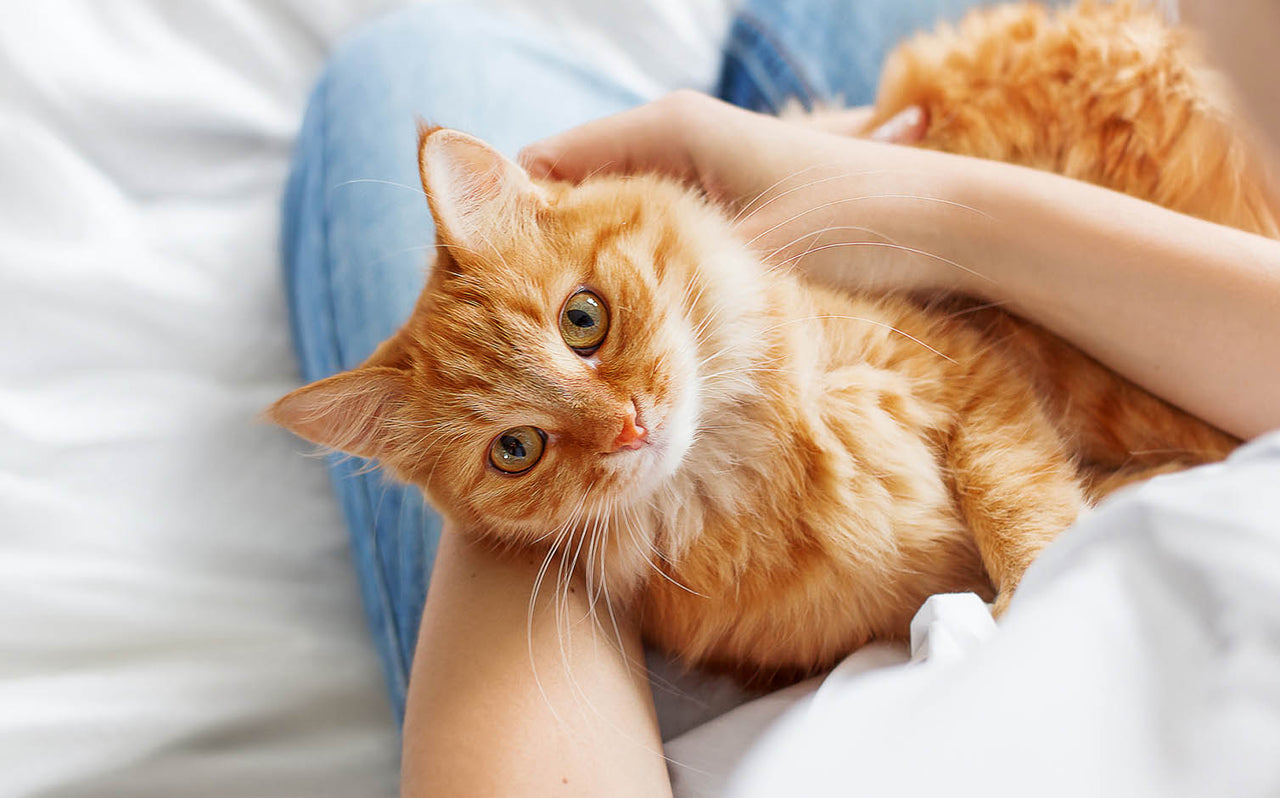We’re certain that there’s nothing your feline friends hate more than being forced to sit still for a lengthy grooming session. Unless you’re lucky enough to have a cat, who finds massage and pampering viscerally rewarding, chances are your kitty will make every effort to wriggle away the moment you get out the brush or comb.
You might be thinking: “What am I doing wrong?” Well, your cat probably feels scared or threatened by you touching its sensitive areas. That being said, if you follow some simple techniques while grooming your cat, you can avoid those stubborn red marks from their claws, which will make both of you much happier in the long run! So, what’s the best way to avoid scratches when trimming your cat’s hair? Here are some tips:

Can't Cats Just Groom Themselves?
Yes, cats instinctively groom themselves. But you can help them keep a healthy coat and stay happy with regular sessions of grooming. Did you know that cats have special tongues lined with cones (or papillae for the science fanatics) that give their coats a deep clean? It’s important that your four-legged friend gets brushed regularly though because their fur will get matted if it’s left unattended (especially for breeds with longer fur). In some cases, matted fur can cause discomfort and even painful skin infections – so keep an eye out! The usual areas prone to matting are the legs, around the face, and the stomach. If you want to know our Top Tangle Teezer Tip, you can inspect the skin of your cat while grooming to look for any signs of fleas, ticks, or other parasites.

How Often Do Cats Need to Be Groomed?
Short answer: their grooming routine depends on their coat type! Longhaired cats typically need to be groomed more often than shorthaired cats. At Tangle Teezer, we suggest weekly sessions of grooming for long length fur. Shorthaired cats, on the other hand, typically only require grooming once every two or three weeks. At the end of the day, brushing your cat’s fur at least once every couple of weeks will help to keep their coat looking and feeling healthy. If you notice any redness or irritation on your cat’s skin, you may want to groom them more often.
Tip 1: Start by Trimming Their Nails
For the sake of you and your cat’s health (and your precious furniture), we would definitely recommend clipping your kitty’s nails before you try to groom them. This can be a tricky procedure if you’ve never done it before. If you’ve never clipped a cat’s nails, try to find a friend or family member who has experience doing so. If you can’t find anyone to help you with this task, you can always find instructional videos online that can help you get the job done right. Be sure to trim the nails on both the front and back paws.
Tip 2: Use a Soft, Yet Sturdy Brush
Regular use of a cat grooming brush will keep their fur healthy and shiny. We would suggest letting your kitty build up the courage to smell and feel the brush before you start your grooming session. Then, once they become comfortable, slowly brush their back (one of their favourite spots!) and then move on to more tender areas like their legs, head, and stomach.
This wouldn’t be a Pet Teezer article if we didn’t recommend our popular Cat Teezer Grooming Brush! Ideal for short to medium-length fur, tangles and knots are easily removed thanks to the two tiers of teeth that are both gentle on the cat's fur and skin. The shorter teeth remove loose hairs and smooth the fur, while the longer teeth gently remove knots and tangles. Also, we have a palm friendly, paw-shaped design, makes it simple to hold. Our brush is also designed to stimulate blood flow – which means you’ll be giving your feline friend the ultimate spa-like massage experience. Make sure you brush your cat in the direction of their fur growth, this will help to prevent painful mats from forming if you groom your cat regularly.
Tip 3: If All Else Fails, Use Rubber Gloves
We get it, your furry friend might not like the idea of regular grooming sessions. But don’t fret - if your cat is very skittish or you’ve tried all of the above and nothing has worked, you may want to consider using rubber gloves. This can help to protect your hands from their customary clawing and quick escapes. Cats have a strong sense of smell, so try to find a scent that your cat likes while you have your grooming session. It can ease their anxiety and make the process much easier. If your cat has been struggling with a fear of being groomed, this may help to build their confidence and make grooming a more enjoyable (and less stressful) experience.

Professional groomers can cost an arm and a leg, but sometimes all you need is a great quality grooming brush to do the trick! Grooming your cat on a regular basis will help keep their fur healthy, soft, and shiny while also preventing painful mats from forming. While your four-legged friend might not like their grooming sessions, in some cases, it’s a necessity. So, the next time you decide to groom you kitty, make sure to keep these top tips in mind to avoid any of those pesky scratches!














